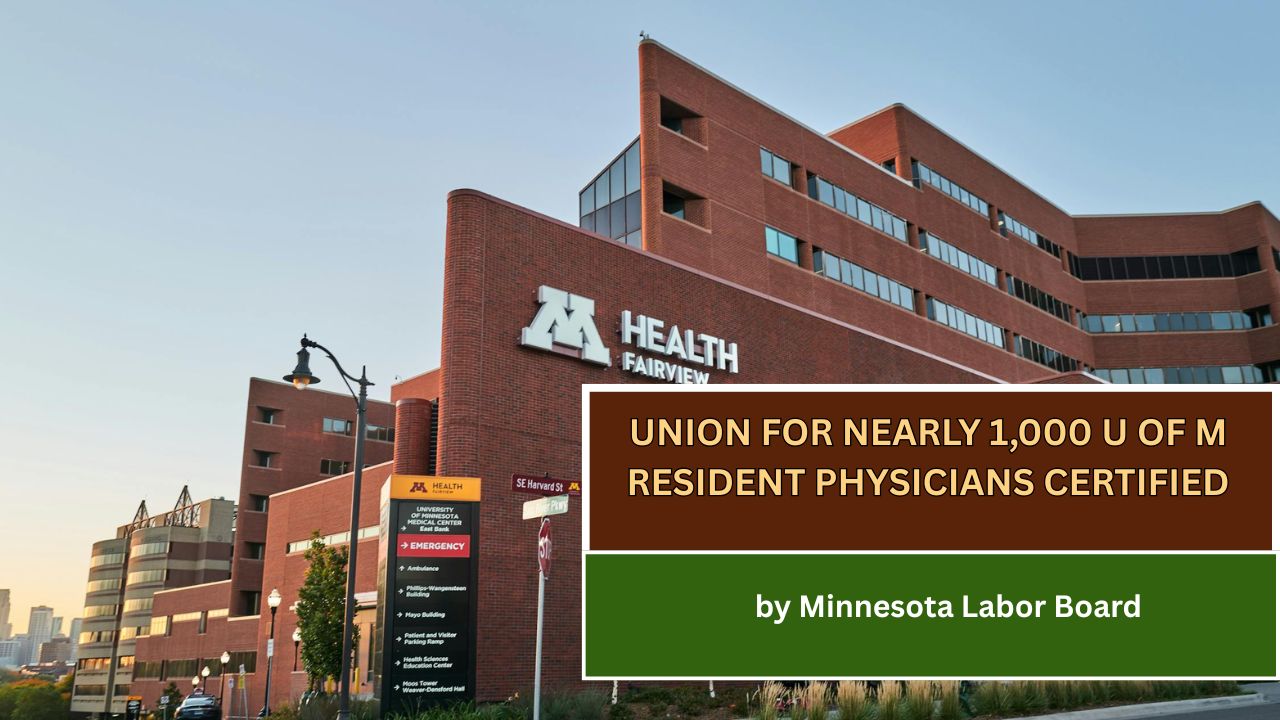MINNEAPOLIS — Nearly 1,000 resident physicians at the University of Minnesota have officially formed a union, marking a significant milestone for medical workers in the state. The Minnesota Bureau of Mediation Services (BMS) certified the union on Friday, confirming that a majority of residents had signed union cards in support of organizing with SEIU’s Committee of Interns and Residents.
This makes the University of Minnesota the second major institution in the state to see its resident physicians unionize, following the certification of over 200 residents at Hennepin Healthcare just last month. Together, these moves signal a growing labor movement among doctors-in-training, driven by demands for better working conditions, fair compensation, and a greater say in their professional environments.
Fast-Tracked Unionization Under New State Law
The rapid pace of unionization efforts at both institutions has been aided by a 2023 Minnesota law that streamlines union certification for public sector employees. Under this law, the BMS can certify a union without requiring a secret ballot election if a majority of workers sign union authorization cards. This process is much faster and less contentious than the route typically followed in the private sector, where an election is often required after petitioning the National Labor Relations Board (NLRB).
The same legislation also removed barriers for University of Minnesota employees to unionize — a key factor in making this recent organizing effort successful.
Demanding a Seat at the Table
Dr. Kaitlin McLean, a University of Minnesota resident, emphasized the emotional and physical toll that residency takes. “We work very hard to take care of people all over the Twin Cities and beyond, and burnout is a real problem,” she said in a statement released by the union. “It’s essential that we have a seat at the table so we can care for ourselves and our patients, and so that we can stay here in Minnesota doing that critical work.”
For resident physicians — who often work 80-hour weeks while earning as little as $16 per hour — unionizing is viewed as a way to fight back against unsustainable workloads, limited bargaining power, and stagnant wages. These workers occupy a paradoxical space in the medical field: highly educated and essential to patient care, yet treated more like temporary laborers than professionals with leverage.
Changing Landscape for Physicians
Unionization among physicians remains rare, largely due to the long-standing perception of doctors as elite members of the health care system. However, health care consolidation has changed that dynamic, leaving many doctors feeling more like cogs in a corporate machine than independent practitioners.
The growing momentum for physician unionization is reflected nationwide. The SEIU Committee of Interns and Residents (CIR) — which now represents more than 37,000 resident doctors — has doubled in size since the onset of the COVID-19 pandemic. In January 2025 alone, CIR won six elections involving 250 or more health care workers across the U.S.
In Minnesota, the momentum is particularly visible. Last year, more than 550 clinicians, including doctors, physician assistants, and nurse practitioners, unionized across Allina Health facilities, creating the largest private-sector union of advanced health care providers in the country at the time. Later, over 130 Allina Health doctors at Mercy and Unity hospitals also secured union certification, despite opposition from hospital management.
University Response and Next Steps
A University of Minnesota spokesperson acknowledged the certification and stated the institution “honors its obligations under the Public Employment Labor Relations Act,” indicating that negotiations with the newly recognized union may soon begin.
The path forward will likely involve complex discussions over working conditions, compensation, and the role of residents in hospital governance. But for many young physicians, having an official union is already a step in the right direction.
This article has been carefully fact-checked by our editorial team to ensure accuracy and eliminate any misleading information. We are committed to maintaining the highest standards of integrity in our content.

Outside of work, he enjoys playing chess, following cricket, and writing short stories. His commitment to integrity and in-depth analysis strengthens OTE News’ mission of providing trustworthy journalism.



